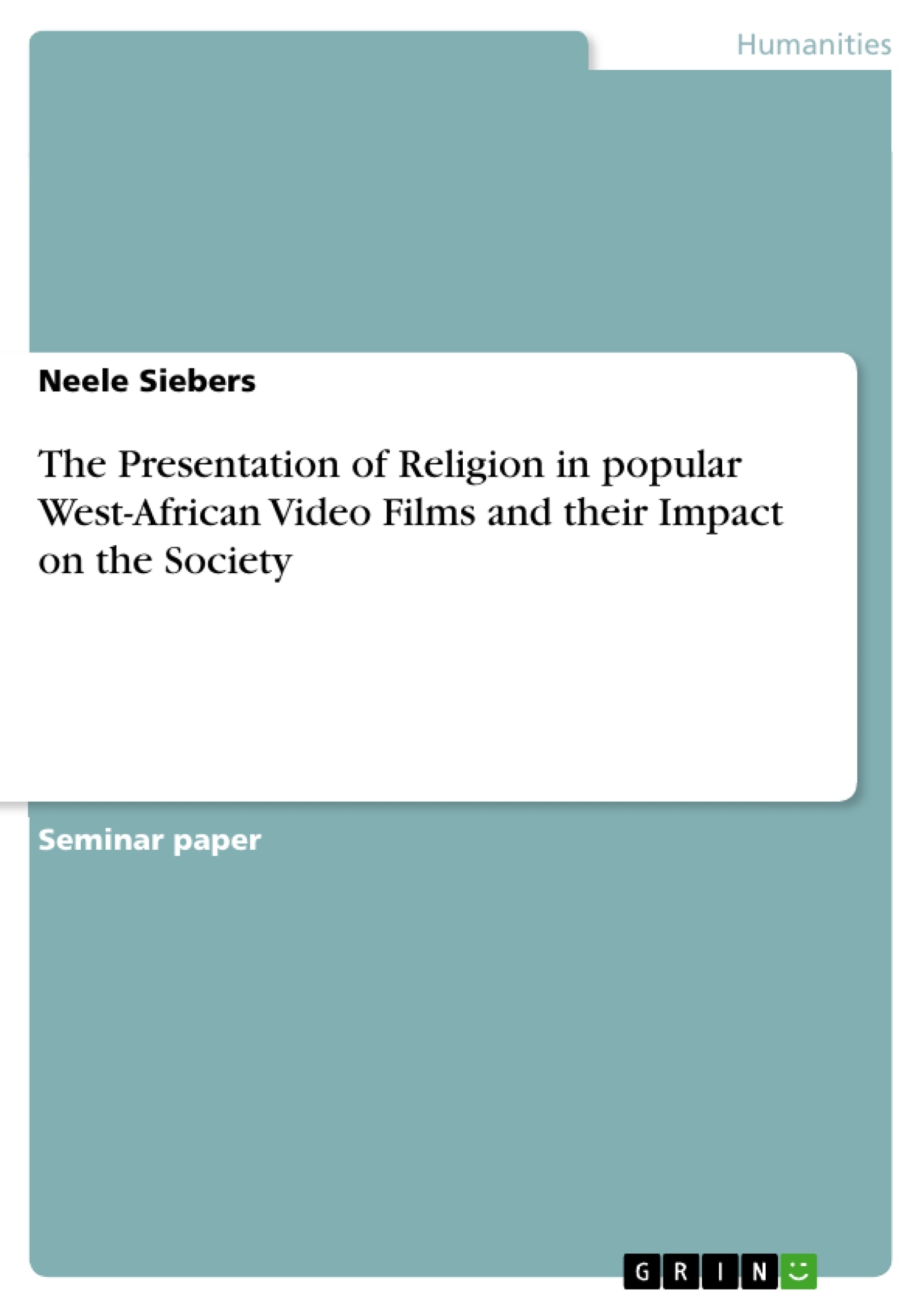Since the 1990’s West-African video films enjoy increasing popularity, especially those produced in Ghana and Nigeria. They are an important part of modern African popular culture and have often displaced Hollywood films.
These films cover a wide spectrum of different genres. They range from comedy, romance and horror to religious films. Often the various genres are mixed but all of the films got something in common: They reflect the modern urban life in contemporary western Africa and are an account of the current process of social change in many societies.
This paper mainly concentrates on religious films, especially those produced by charismatic Pentecostal Churches.
Inhaltsverzeichnis (Table of Contents)
- Introduction
- An overview: Nigerian and Ghanaian Religious Video-Films
- Main Issues and Structures of Popular Religious Films
- Main Religious Characters
- Pastors
- Traditional Religious Characters
- Traditional Priests
- Traditional Chiefs
- Mami Water
- Other Characters
- The Perceptions of the Audience and of the Producers
- The Audience
- The Producers
Zielsetzung und Themenschwerpunkte (Objectives and Key Themes)
This paper explores the presentation of religion in popular West-African video films, particularly those produced by charismatic Pentecostal churches. It aims to analyze the impact these films have on society, focusing on their structure, characters, and the perceptions of both the audience and producers.
- The rise of religious video films in Ghana and Nigeria
- The portrayal of Christianity and traditional religious beliefs in these films
- The use of special effects and narratives to depict spiritual conflict
- The impact of these films on social change and cultural perceptions
- The role of pastors and traditional religious characters in shaping the film's message
Zusammenfassung der Kapitel (Chapter Summaries)
The first chapter introduces the context of West-African video films, highlighting their growing popularity and diverse genres. It emphasizes the focus on religious films, especially those produced by Pentecostal churches, and their reflection of modern urban life and social change.
Chapter two provides an overview of the history of the film industry in Ghana and Nigeria, outlining their similarities and differences. This includes a discussion of the influence of democratization, modern technologies, and censorship on the production of films.
Chapter three delves into the main themes and structure of popular religious films. It highlights the common narrative of a spiritual battle between good and evil forces, often depicting traditional religious characters as the embodiment of evil and Christian God as superior. The chapter explores how this dualistic imagery reflects the ongoing process of social change in West-African societies.
Chapter four analyzes the presentation of religious characters in popular video films, focusing on pastors and traditional religious characters. It examines how pastors are often portrayed as powerful figures with divine revelations and special abilities, while traditional religious characters are frequently depicted as demonic forces.
Schlüsselwörter (Keywords)
The key words and concepts explored in this paper include: West-African video films, Pentecostal churches, religious beliefs, traditional religion, social change, spiritual conflict, audience perception, film production, and the impact of media on society.
- Citation du texte
- Neele Siebers (Auteur), 2008, The Presentation of Religion in popular West-African Video Films and their Impact on the Society, Munich, GRIN Verlag, https://www.grin.com/document/144285



